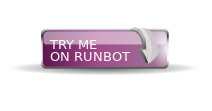Apply default images to new and existing products.
Project description

Default Product Images
This module adds default images to products with the ability to map their images to their Category’s Image, to a single, Global Product Image, or to both, Global and Category, where global acts as a backup if the category has no image. You can also disable default images by choosing No Default Image.
Usage
There are a few notable features in this module, see below:
Post Installation
After installation, all products with no image will be automatically changed when you change your company’s Product Image Target (see Stock Configuration Page). Since the default option is No Default Image, your product images will remain untouched during installation.
When Will Product Images Be Automatically Changed?
Product images will automatically change when you change Default Product Image in the stock configuration page.
Product images will also be changed if you change the product’s category in the product form. This only applies if the Default Product Image is set to Category’s Image or Global and Category.
Lastly, product images will be automatically changed if you change the image on their category’s image. Again, only applicable if Default Product Image is set to Category’s Image or Global and Category.
The above rules only apply to your current products that do not have an image. Products that already have an image when installing this module will be marked as custom images. The images on those products will not change unless you click the Apply Default Image in the product form view.
Stock Configuration Page
Go to Inventory in the top header.
Under Configuration, click Settings.
Under Products is a field, Default Product Image.
No Default Image deletes all eligible product images.
Global Product Image sets all eligible product images to the Global Product Image field that shows up below.
Category’s Image sets all eligible product images to their category’s image.
Global and Category sets all eligible product images to their category’s image if that category has an image. Otherwise the image is set to the Global Product Image.
Eligible refers to products that have Auto Change Image as True, do not have an image, do not have a custom image, or have a default image already.
Product Category Form View
Image fields have been added to categories
Changing the category’s image field will also change product images that are tied to that category. Only applicable if Default Product Image is set to Category’s Image or Global and Category
Product Form View
Go to Inventory in the top header.
Under Inventory Control, click Products.
Click on a product.
In the product form view, you’ll see in the upper left hand corner a new button which says Apply Default Image. Use this button if you want to change a custom image to a default one, or reset a default image.
Go to a product that has a default or no image, and you’ll see a new field under the General Information tab called Auto Change Image. Uncheck this field if you want the image not to change. When uploading a custom image you don’t have to worry about this field. However if you want to delete a product’s image and keep it from automatically changing, make sure to uncheck Auto Change Image.
All image defaults are also loaded when you create a new product.

Known Issues / Roadmap
Refactor product.template _change_template_image method
Centralize logic that converts the company product_image_target to the correct product image_type value (usually in the form of a to_type arg), accounting for GLOBAL_CATEGORY. Repetitive logic occurs in: product.template apply_default_image, product.template _onchange_categ_id, product.template default_get, res.company write, and product.category write methods.
After logic is centralized, add a res.company create method overload that auto-populates product images.
Bug Tracker
Bugs are tracked on GitHub Issues. In case of trouble, please check there if your issue has already been reported. If you spotted it first, help us smash it by providing detailed and welcomed feedback.
Credits
Images
Contributors
Brett Wood <bwood@laslabs.com>
Maintainer

This module is maintained by the OCA.
OCA, or the Odoo Community Association, is a nonprofit organization whose mission is to support the collaborative development of Odoo features and promote its widespread use.
To contribute to this module, please visit http://odoo-community.org.
Project details
Release history Release notifications | RSS feed
Download files
Download the file for your platform. If you're not sure which to choose, learn more about installing packages.
Source Distributions
Built Distribution
Hashes for odoo10_addon_product_default_image-10.0.1.0.0.99.dev8-py2-none-any.whl
| Algorithm | Hash digest | |
|---|---|---|
| SHA256 | 429c36dd7c13bb25488ba632d0507002029f28b9f2027ba3420d80c183c11aca |
|
| MD5 | d4b394bc769bc284987f6eec7272d85c |
|
| BLAKE2b-256 | 167833be37b7a5ba5fecb8519f2321ed4c0cd24ee1bee75c79a1eca27bc6bbae |











